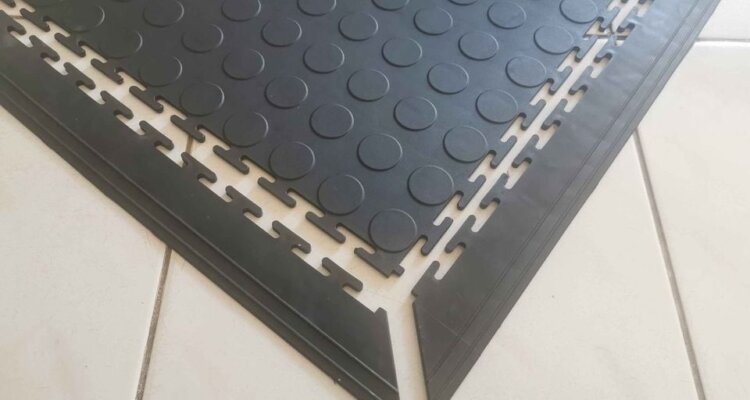A Comprehensive Guide to PVC Mats: Your Durable and Versatile Flooring Solution

The Advantages of Using Interlocking Floor
Currently, in South Africa, the use of the interlocking floor has conquered architects when it comes to paving sidewalks and environments.
it is widely used in public spaces, in place of the old cobblestones and garage floor. its placement, we can say that it is quite fun, it is placed like a puzzle, the pieces are placed in an interconnected way and are paved with layers of sand, thus forming a firm and uniform surface.
and this preference is right, the benefits of interlocking flooring are not just about the structure, but in terms of aesthetics, economics, and ecology, and these benefits are acquired both in the short and in the long term, in addition to generating an excellent cost-benefit in large works.
One of the advantages of this floor is that it is able to make spaces uniform and personalized according to the environment.
Top Advantages of using the interlocking floor.
1. duration
Compared to cobblestones and asphalt floors, the interlocked floor is much more durable, this is because it is a sustainable floor and has cracked between them, causing water to flow without damaging its structure.
their duration is estimated at 20 years, so the preference is to use them on sidewalks, avenues and other public roads. in addition, it can be easily changed location, its removal is very simple and it does not break easily.
2. cooler environments
interlocking floors have the ability to reflect light instead of retaining it, so they become an excellent native for temperature reduction, this is because most of the time they are produced in lighter tones than asphalt floors.
that is why it is very suitable for open places, where there is a constant movement of people, such as squares and sidewalks, its benefits are felt mainly in the summer.
3. does not need maintenance
Due to its permeability, the risks of cracks and deformations on the surface of the interlocking floors are very few. as already said, some spaces use the same floor for 20 years, not needing repairs or renovations.
the thickness of the part is what guarantees this durability, so for smaller or lighter flows, such as just people, for example, the thickness of the part can be thinner, now for flows of cars and trucks, heavier flows, it needs be thicker, so that it is firm and resistant.
4. Eco-friendly and cheap
the interlocked floor combines the useful with the pleasant, as it is ecological and very profitable. ecological in that it allows water to be absorbed, causing it to return to the soil. and profitable, as this situation avoids cracks and deformations on the floor surface.
Another ecologically correct advantage of these pieces is that, as inputs such as cement, for example, are not used in their placement, the ecosystem is favored.
5. quick and convenient installation
for the installation of this floor, it is not necessary for the person to have specific knowledge, since its installation is easy.
The steps are as follows line the place with layers of sand and then just fit the pre-molded parts, simple, isn’t it?! In this case, what makes all the difference is the interlocking of the pieces with each other, they need to be stuck together, for that it’s just fitting together like pieces of a jigsaw puzzle.
and for removing or moving the pieces to another space, it’s even simpler, it’s just undocking the pieces, it’s easy to remove and it’s very difficult to crack. an extra advantage is that the passage can be released immediately, not needing to dry.
6. aesthetic and customizable
in relation to aesthetics, the interlocking floor has an advantage over the cobblestone and the asphalt floor. they can be found in different colors, thus allowing the customization of space and the creation of various shapes and designs.
it can be used to signal a particular surface, as it will stand out and be easily identified by pedestrians, planes or helicopters. in stores and companies, for example, it is possible to design the company logo, or even some personalized message.
7. Reduces energy consumption
the predominantly light tones of the interlocking floors directly influence the consumption of electric light energy, this occurs because, as already mentioned, the pieces are able to reflect light instead of retaining it, in this way it absorbs less light and requires less lighting.
8. water drainage
water is absorbed more easily than other floors due to the fact that there are cracks between the pieces, thus allowing the soil to drain water more easily.
for environments that require greater drainage, there is a type of interlocked floor that has a specific porosity, precisely to increase this drainage.
in this way the installation of this floor prevents flooding, is ecologically correct, and reduces damage to the floor.
9. accessibility
this type of paving has a non-slip surface, facilitating the traffic of motorcycles, bicycles, and especially those of the disabled. on the other floors, the risk of accidents on rainy days is very high, proving to be even more dangerous for people who depend on wheelchairs.
a good place for these floors to be installed is in schools, academic centers, hospitals, squares, avenues, in short, places that have a large circulation of people. ramps for the physically and visually impaired may contain textures to facilitate locomotion and serve as a guide.
Architects and builders are increasingly investing in these floors in paving due to their advantages. it is present in South Africa, mainly in public and institutional works, due to its better cost-benefit ratio. the use of this floor can bring great yields, and still avoid problems in the future.
You also buy this floor for your construction; you will only win. Call us today or fill in the form for a free quote.
This Post Has 0 Comments